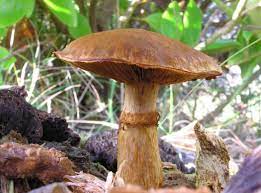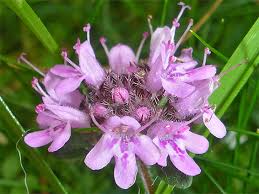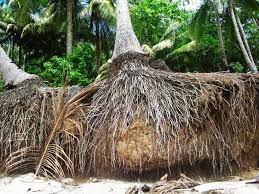The Broccoli Leaves: Economic Importance, Uses, and By-Products
Broccoli leaves, often overlooked in favor of the more commonly consumed florets and stems, are an integral part of the broccoli plant, scientifically known as Brassica oleracea var. italica. These leaves, which are broad and flat with serrated edges, resemble collard greens or kale, both of which are also members of the Brassicaceae family.
The leaves are dark green and can vary in size, depending on the stage of growth and the specific broccoli variety. They play a crucial role in the plant’s physiology and offer numerous nutritional and culinary benefits.
Botanically, broccoli leaves are essential for the plant’s photosynthesis process, converting sunlight into the energy needed for growth and development. The large surface area of the leaves allows for maximum light absorption, which fuels the production of glucose and other essential nutrients.
These nutrients are then transported throughout the plant, supporting the growth of the stems and florets. The robust structure of the leaves also provides protection against environmental stressors such as wind and pests.
Nutritionally, broccoli leaves are a powerhouse of vitamins, minerals, and antioxidants. They are exceptionally high in vitamin A, which is vital for maintaining healthy vision, skin, and immune function. Vitamin C content in broccoli leaves is also significant, playing a crucial role in collagen synthesis, wound healing, and enhancing immune defense.
Additionally, broccoli leaves are rich in vitamin K, which is essential for blood clotting and bone health. The leaves also contain a notable amount of folate, which is necessary for DNA synthesis and cell division, making them particularly important for pregnant women. Beyond vitamins, broccoli leaves provide a good source of calcium, iron, potassium, and magnesium, which are essential for maintaining strong bones, proper muscle function, and overall metabolic health.
The antioxidant content in broccoli leaves is noteworthy, with compounds such as beta-carotene, lutein, and sulforaphane. These antioxidants help neutralize harmful free radicals in the body, reducing oxidative stress and the risk of chronic diseases such as cancer, heart disease, and neurodegenerative disorders. Sulforaphane, in particular, has been studied for its potential anti-cancer properties, showing promise in inhibiting the growth of cancer cells and promoting detoxification enzymes.
Culinarily, broccoli leaves are incredibly versatile and can be used in a variety of dishes. Their flavor is similar to other leafy greens like kale or collard greens, with a slightly bitter and earthy taste that becomes milder when cooked. Broccoli leaves can be eaten raw in salads, where they add a robust texture and flavor.
They can also be sautéed, steamed, or roasted, making them a nutritious addition to stir-fries, soups, and casseroles. When preparing broccoli leaves, it is often recommended to remove the tough central rib and chop the leaves into manageable pieces. Cooking them with a bit of oil and garlic can enhance their flavor and make them more palatable.
In addition to their nutritional and culinary uses, broccoli leaves also have agricultural benefits. They can be used as a green manure, being tilled back into the soil to enhance fertility and organic matter content. This practice supports sustainable farming by reducing the need for chemical fertilizers and improving soil health. Broccoli leaves can also be fed to livestock as a nutritious fodder, providing a high-fiber, nutrient-rich supplement to their diet.
The cultivation of broccoli leaves follows the same general principles as growing broccoli for its florets. Broccoli is a cool-season crop that thrives in moderate temperatures between 60 to 70 degrees Fahrenheit. It requires well-drained, fertile soil with a pH between 6.0 and 7.0, and consistent moisture to develop properly.
Broccoli is typically grown from seeds, which can be sown directly into the soil or started indoors and then transplanted. Regular watering and protection from pests are essential to ensure healthy leaf development.
Broccoli leaves are a highly nutritious and versatile part of the broccoli plant. Their rich content of vitamins, minerals, and antioxidants, combined with their culinary flexibility, makes them a valuable addition to a healthy diet. Furthermore, their agricultural benefits support sustainable farming practices.
Whether consumed raw or cooked, broccoli leaves offer numerous health benefits and contribute to reducing food waste by utilizing the entire plant.
The Economic Importance and Uses of Broccoli Leaves

1. Agricultural Income: Broccoli leaves contribute to the overall revenue of broccoli farming operations, as they can be harvested and sold along with the florets and stems.
2. Culinary Uses: Broccoli leaves are utilized in various culinary applications, such as salads, stir-fries, soups, and smoothies, increasing their demand in the food industry.
3. Food Processing: Processed broccoli leaves can be used in food products like frozen vegetable mixes, adding nutritional value and versatility.
4. Health Supplements: Extracts from broccoli leaves, rich in vitamins and antioxidants, are used in dietary supplements aimed at promoting health and wellness.
5. Livestock Feed: Broccoli leaves can be fed to livestock as nutritious fodder, reducing feed costs and providing additional income for farmers.
6. Organic Fertilizer: Broccoli leaves can be composted and used as organic fertilizer, enhancing soil fertility and reducing the need for chemical fertilizers.
7. Export Commodity: Processed broccoli leaves, such as freeze-dried powder or extracts, can be exported to international markets, contributing to foreign exchange earnings.
8. Research and Development: Broccoli leaves are the subject of ongoing research for their potential health benefits, leading to innovations in food science and medicine.
9. Biotechnology: Genetic engineering in broccoli aims to enhance the nutritional content and yield of leaves, improving crop productivity and profitability.
10. Sustainable Agriculture: Utilizing broccoli leaves supports sustainable farming practices by reducing food waste and promoting soil health.
11. Urban Agriculture: Broccoli leaves are grown in urban gardens and community farms, providing fresh produce to local communities and supporting urban agriculture initiatives.
12. Agro-tourism: Farms that offer pick-your-own broccoli leaf experiences attract tourists, contributing to rural economies and promoting agricultural education.
13. Value-added Products: Broccoli leaves can be processed into value-added products like dehydrated chips or flavored snacks, catering to niche markets and increasing profitability.
14. Educational Programs: Broccoli leaves are used in educational programs to teach students about nutrition, agriculture, and sustainable food systems, supporting educational initiatives and awareness campaigns.
15. Culinary Education: Culinary schools incorporate broccoli leaves into their curriculum to teach students about culinary techniques and ingredient utilization, fostering culinary innovation and creativity.
16. Food Security: Utilizing broccoli leaves helps increase food availability and security by maximizing the use of the entire plant, reducing food waste, and providing nutritious food options.
17. Community Gardens: Broccoli leaves are grown in community gardens, promoting food sovereignty, community engagement, and environmental sustainability.
18. Economic Diversification: Broccoli leaves offer farmers and food producers opportunities for economic diversification by expanding product lines, tapping into new markets, and adding value to existing products.
Read Also General Features of Ruminant Animals
The Products and By-products That Can Be Derived From Broccoli Leaves

1. Fresh Broccoli Leaves: Sold in supermarkets for direct consumption, often used in salads and stir-fries.
2. Frozen Broccoli Leaf Mixes: Blanched and frozen for long-term storage, retaining nutritional value and convenience.
3. Dehydrated Broccoli Leaf Chips: Dehydrated broccoli leaves seasoned for a healthy snack option.
4. Broccoli Leaf Powder: Made by drying and grinding broccoli leaves, used in health supplements and food products.
5. Broccoli Leaf Extracts: Concentrated forms of broccoli leaves used in dietary supplements for their health benefits.
6. Broccoli Leaf Tea: Steeped broccoli leaves used to make a nutritious herbal tea, offering antioxidant properties.
7. Broccoli Leaf Pesto: Pureed broccoli leaves blended with nuts, garlic, and olive oil, used as a flavorful sauce or spread.
8. Broccoli Leaf Wraps: Large broccoli leaves used as a substitute for traditional wraps, providing a low-carb, nutrient-rich option.
9. Broccoli Leaf Stir-fry: Sautéed broccoli leaves with garlic and soy sauce, served as a side dish or incorporated into main courses.
10. Broccoli Leaf Smoothies: Blended broccoli leaves with fruits and other vegetables for a nutritious beverage option.
11. Broccoli Leaf Soup: Pureed broccoli leaves used as a base for soups, offering a rich, earthy flavor.
12. Broccoli Leaf Chips: Thinly sliced broccoli leaves baked or fried until crispy, served as a crunchy snack.
13. Broccoli Leaf Quiche: Chopped broccoli leaves mixed with eggs, cheese, and other fillings, baked into a savory pie.
14. Broccoli Leaf Salad: Raw broccoli leaves tossed with a vinaigrette dressing and other salad ingredients, offering a fresh, nutritious option.
15. Broccoli Leaf Kimchi: Fermented broccoli leaves seasoned with spices, used as a condiment or side dish in Korean cuisine.
16. Broccoli Leaf Pasta: Pureed broccoli leaves incorporated into pasta dough, creating a vibrant green pasta option.
17. Broccoli Leaf Wraps: Large broccoli leaves used as a substitute for traditional wraps, providing a low-carb, nutrient-rich option.
Read Also Feeding Materials for Ruminant Animals
Frequently Asked Questions (FAQ’s) About Broccoli Leaves

1. What are Broccoli Leaves?
Broccoli leaves are the large, dark green leaves of the broccoli plant, often overlooked but rich in nutrients and culinary potential.
2. Are Broccoli Leaves edible?
Yes, broccoli leaves are edible and offer numerous health benefits. They can be used in a variety of culinary dishes.
3. How do you prepare Broccoli Leaves?
Broccoli leaves can be washed, trimmed, and used raw in salads or cooked by sautéing, steaming, or boiling.
4. Are Broccoli Leaves nutritious?
Yes, broccoli leaves are highly nutritious, containing vitamins, minerals, and antioxidants beneficial for health.
5. Can you eat Broccoli Leaves raw?
Yes, broccoli leaves can be eaten raw in salads or smoothies, providing a crunchy texture and fresh flavor.
6. What are the health benefits of Broccoli Leaves?
Broccoli leaves are rich in vitamins A, C, and K, as well as fiber and antioxidants, supporting immune function, bone health, and overall well-being.
7. How do you store Broccoli Leaves?
Fresh broccoli leaves should be stored in the refrigerator in a plastic bag or container to maintain freshness. They can also be blanched and frozen for longer storage.
8. Can you cook Broccoli Leaves?
Yes, broccoli leaves can be cooked by sautéing, steaming, or boiling, similar to other leafy greens like kale or spinach.
9. Are Broccoli Leaves bitter?
Broccoli leaves can have a slightly bitter taste, especially when raw. Cooking them can help mellow out the bitterness and enhance their flavor.
10. Can you compost Broccoli Leaves?
Yes, broccoli leaves can be composted along with other organic waste to create nutrient-rich compost for gardens and plants.
Read Also Low-Maintenance Plants for Beginners









